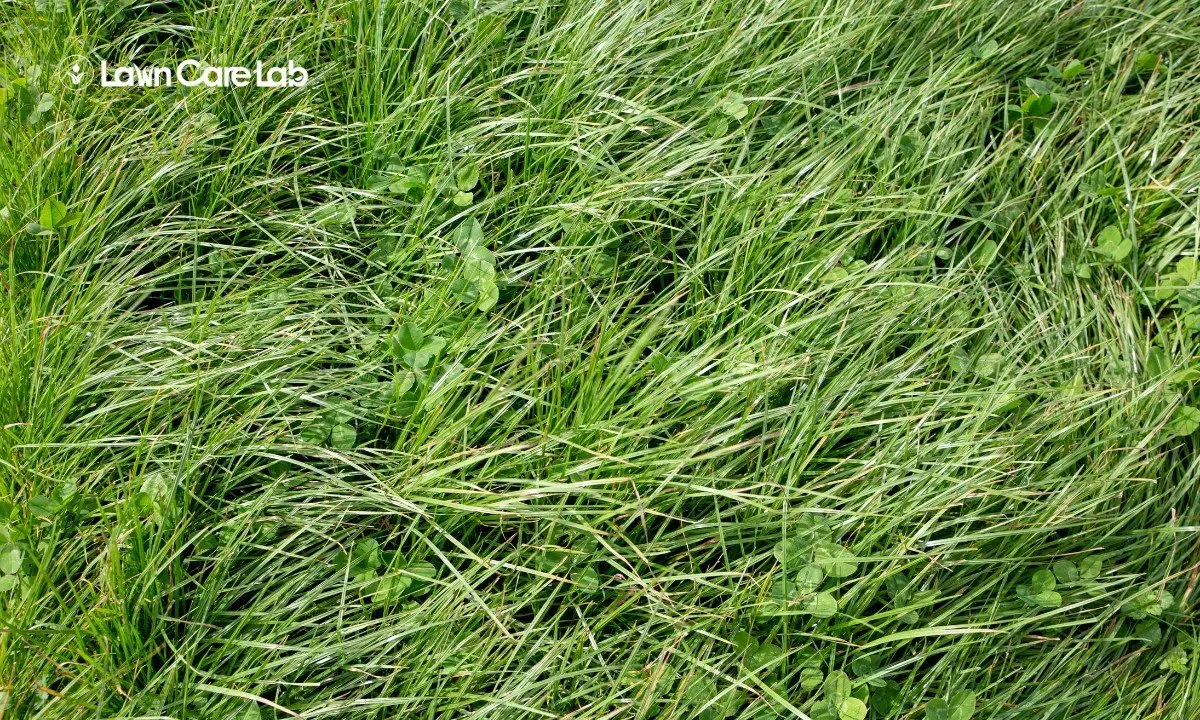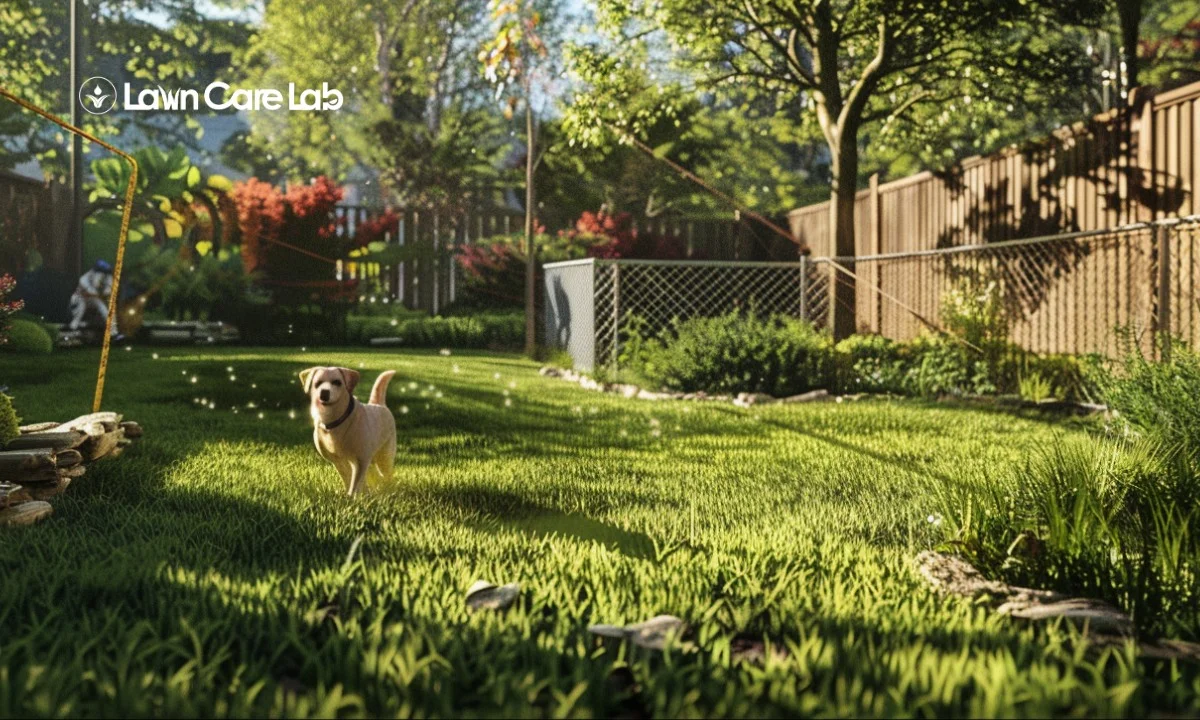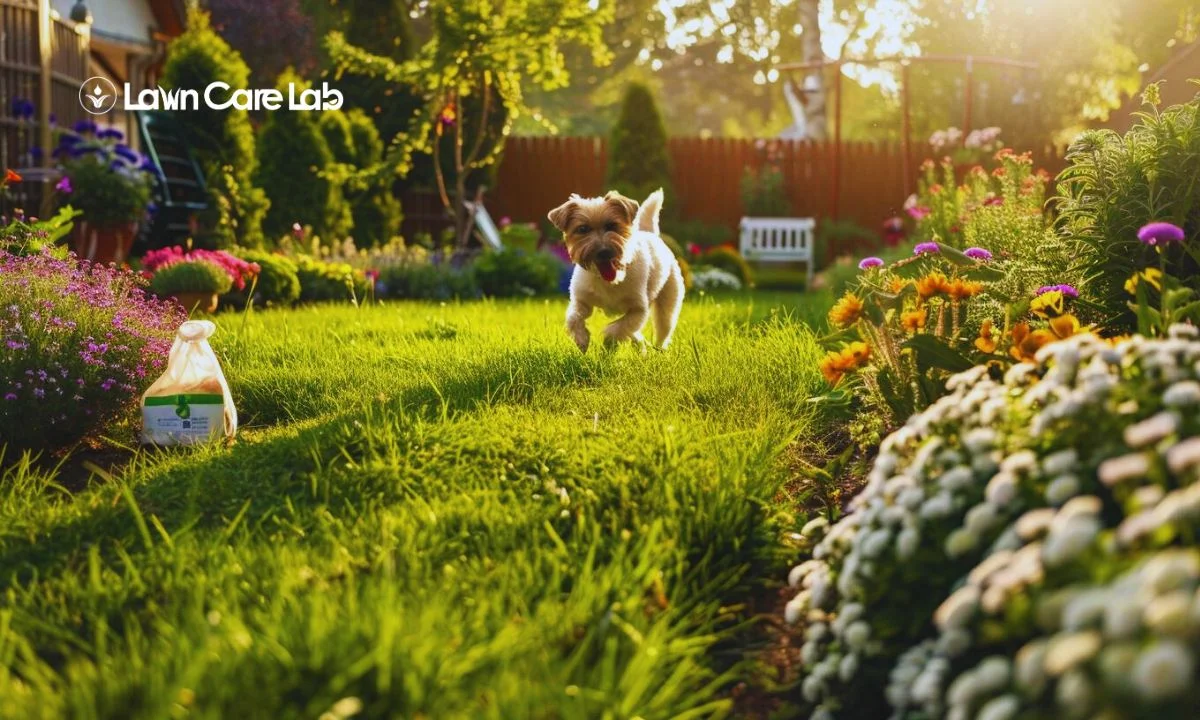Perennial Ryegrass, this cool-climate champ turns lawns into lush green carpets that’ll be your neighborhood’s envy. This grass has the strength and resilience to withstand harsh weather conditions, making it an ideal choice for living in cooler climates.
You don’t have to be a gardening guru to grow it. With our guidance, you’ll learn how to plant and maintain this gem like a pro in no time!
Highlights
- Perennial Ryegrass is an excellent choice for cool climates.
- It provides a lush green carpet and superior winter coloration.
- Perennial Ryegrass requires higher maintenance and upfront cost.
- It regrows annually for long-term turf health.
Table of Contents
Perennial Ryegrass Characteristics and Uses
If you want a lush, green lawn ideal for cool climates, perennial ryegrass is the way to go. You’ll appreciate the many benefits of this grass variety, including its exceptional disease resistance and high tolerance to foot traffic.
In our discussion, we’ll dig into an overview of perennial ryegrass, explore its advantages in detail, and help you understand the differences between various perennial ryegrass varieties – all aimed at guiding you in making an informed choice for your lawn.
Overview of Perennial Ryegrass
Perennial ryegrass is ideal for cooler climates, offering a lush, green carpet that is a delight to walk on.
This grass has fine blades and dense growth, making it a popular lawn choice.
It establishes quickly from perennial ryegrass seed, ensuring a beautiful lawn in no time.
Frequent mowing and irrigation are essential for maintaining the best perennial ryegrass lawns.
One common question that arises is whether perennial ryegrass dies in the summer. The answer is no. While it may enter dormancy during extreme heat, it will revive once temperatures cool.
When comparing perennial ryegrass vs. tall fescue, it’s important to note that it offers a smoother surface, making it suitable for sports fields and golf courses. Its ability to withstand heavy foot traffic makes it a popular choice for these areas.
Benefits of Perennial Ryegrass
Perennial ryegrass has several benefits that set it apart from alternatives like annual ryegrass and Kentucky bluegrass.
- Perennial versus Annual Ryegrass: Perennial establishes quickly and maintains its color year-round, unlike annual ryegrass.
- Tolerance to Traffic: Perennial ryegrass can withstand more foot traffic than other grasses.
- Kentucky Bluegrass vs. Perennial Ryegrass: While both are cool-season grasses, perennial ryegrass germinates faster, offering quick lawn coverage.
- Hardy Nature: The durability of perennial vs. annual ryegrass makes it a top choice for lawns in cooler climates.
Comparing Perennial Ryegrass Varieties
It’s important to note that not all varieties are created equal when choosing between different types of this robust turfgrass. The right variety for you will depend on your climate and how you intend to use your lawn.
Take a look at the following table comparing Derby Supreme, Accent, and Cutter:
| Variety | Disease Resistance | Color | Texture |
|---|---|---|---|
| Derby Supreme | High | Deep Green | Fine |
| Accent | Moderate | Bright Green | Medium-Fine |
| Cutter | Low | Light Green | Coarse |
Growing and Maintaining Perennial Ryegrass
We’ll guide you through the crucial steps from planting your grass seed for optimal growth to providing regular care and maintenance that keeps your turf thriving.
- First, let’s start with the planting process. Perennial ryegrass is best sown in early spring or fall when temperatures are cooler.
- Begin by preparing the soil, ensuring it is well-drained and debris-free.
- Loosen the soil with a rake or tiller to create a smooth surface for the seed.
- Next, evenly distribute the seed over the area, following the recommended seeding rate.
- Lightly rake the seed into the soil, ensuring good seed-to-soil contact.
- Water the area thoroughly and moisten the soil until the seed germinates.
Once your perennial ryegrass has sprouted, it’s important to provide regular care and maintenance.
This includes watering, mowing, and fertilizing. Water deeply but infrequently, allowing the soil to dry out slightly between waterings.
Keep the grass height at around 2-3 inches when mowing to promote healthy growth and discourage weed competition.
Regularly fertilize your lawn with a balanced fertilizer, following the recommended application rates.
Transitioning your ryegrass lawn seasonally or to alternative grass species is also a key maintenance aspect.
As temperatures rise in the summer, perennial ryegrass may struggle and go dormant.
During this time, consider overseeding with warm-season grasses that thrive in higher temperatures. In the fall, you can return to perennial ryegrass by overseeding again.
Planting Perennial Ryegrass
Planting perennial ryegrass isn’t just an act; it’s an innovative investment in cultivating a beautiful and resilient green space.
Here are some key steps to follow:
Preparation:
- First, clear away any weeds from your yard.
- Next, aerate and fertilize the soil to optimize conditions.
Sowing:
- Use 5-10 lbs of seed per 1000 sq ft for optimal coverage.
- Sow shallowly at about 1/4 inch deep.
Remember to keep the ground moist until your new grass is established.
Ongoing Care and Maintenance
Maintaining a thriving yard isn’t just about planting; it’s an ongoing commitment to regular care and attention. With perennial ryegrass, you’ll need to fertilize 2-4 times annually to ensure your lawn gets the nutrients it needs to flourish.
Consistent mowing at a height of 1.5-2.5 inches will help maintain its lush appearance and overall health.
During dry periods, don’t forget to irrigate; your grass craves hydration as you do!
Fall is the ideal time for overseeding any thin areas that appear over time.
Periodic dethatching and aeration can prevent soil compaction, promoting better water absorption and root growth.
Lastly, stay vigilant against diseases and pests – unwelcome guests can quickly mar your gorgeous green lawn if not properly controlled.
Transitioning Ryegrass Lawns
As you prepare for the shift in seasons, it’s crucial to understand how to transition your overseeded lawn effectively. Transitioning your ryegrass lawn isn’t just about changing mowing heights—it’s a delicate process that requires strategic planning and execution.
Here’s a simple guide:
| Season | Lawn Care Step |
|---|---|
| Spring | Gradually increase mowing height |
| Fall | Begin reducing mowing height for overseeding |
Annually overseeding with ryegrass ensures your lawn maintains its gorgeous green hue, even when warm-season grasses like bermudagrass go dormant.
Comparing Perennial Ryegrass to Other Turf Grasses
Now that you’re familiar with the benefits of Perennial Ryegrass for your lawn, it’s important to consider how it stacks up against other turf grasses.
Perennial Ryegrass vs. Kentucky Bluegrass
You’re probably wondering which is the better choice between Perennial Ryegrass and Kentucky Bluegrass for your cool climate lawn, aren’t you? Well, let’s dive into some key differences.
Firstly, ryegrass establishes more quickly than bluegrass, providing instant gratification through rapid growth. However, it requires more frequent mowing – a small price for a lush green carpet underfoot.
Kentucky Bluegrass may be more shade tolerant, but Ryegrass takes the lead with its excellent adaptability when overseeding warm seasons.
By choosing Perennial Ryegrass, you’ll have a gorgeous green lawn and an innovative solution that aligns perfectly with the demands of cool climates.
Perennial Ryegrass vs. Tall Fescue
Tall Fescue takes the trophy with its remarkable heat and drought resistance in the battle of endurance. It’s a survivor designed to thrive in rough conditions where others may falter.
However, don’t dismiss Perennial Ryegrass just yet. Its refined leaf texture provides a denser growth pattern that may be aesthetically pleasing for your lawn vision.
Furthermore, if you’re eager to see quick results from your seeding efforts, Perennial Ryegrass sprouts rapidly compared to Tall Fescue. And while it doesn’t boast quite the same level of disease resistance as its competitor, it still holds its own pretty well in this department too.
Perennial vs. Annual Ryegrass
Annual Ryegrass might be your ticket if you’re thinking about a cheaper option that’ll add life to your yard quickly. However, remember that it’s a fleeting beauty that fades with the heat of summer.
It may be tempting to go this route because it establishes faster, sprucing up your lawn in no time. Yet, its lusher green hue doesn’t hold out against winter’s chill as well as its perennial counterpart.
Opting for Perennial Ryegrass offers an innovative solution for those in cooler climates. Though higher maintenance and costlier upfront, this variety regrows annually, providing long-term turf health and superior winter coloration.
Conclusion
Perennial Ryegrass is a hardy, cool-season grass that will give your lawn a lush, green look. With proper care and maintenance, it can outshine other turfgrasses. While it may require more TLC than some grasses, the results are worth it.
FAQs on Perennial Ryegrass
Does perennial ryegrass wither during the summer?
Can perennial ryegrass proliferate?
What is the best time to sow perennial ryegrass?
Is perennial ryegrass a recurrent grass year after year?
What is the lethal temperature for perennial ryegrass?
What is the lifespan of perennial ryegrass?
Is perennial ryegrass effective in suppressing weed growth?
How much time does perennial ryegrass take to grow?
- How to Create a Lawn Care Schedule for Southern Climates - October 30, 2024
- How to Use Compost Tea to Boost Lawn Growth and Soil Health - October 23, 2024
- The Best Grasses for Saltwater-Exposed Lawns: Coastal Lawn Care - October 17, 2024




